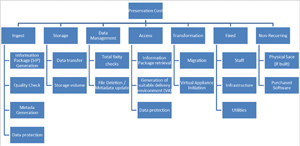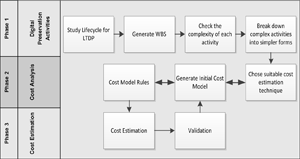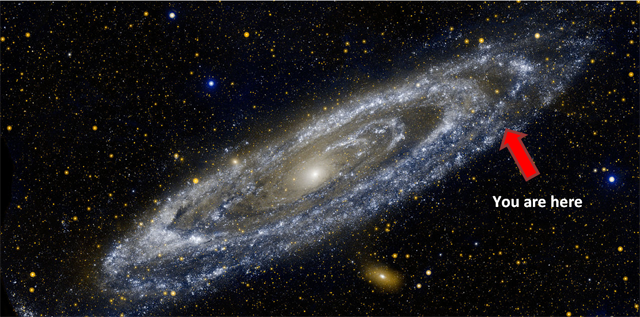'Friends and family (or “Is there anybody out there”)' by Paul Stokes
- Details
- Created on Saturday, 30 November 2013 23:07
- Written by Paul Stokes

Image—“Is there anybody out there” Glyn Baker
 As has been pointed out in many books, articles, films, television programmes, web pages and other communicative media the universe is big. It’s stupendously big. It’s so mind numbingly big that the human mind cannot comprehend a) just how big it is and b) just how infinitesimally small we are in comparison—a fact that’s put to (unpleasant) use in the Total Perspective Vortex2, a device used as a torture and killing device on the planet Frogstar. Victims are made to realise exactly how insignificant they are and… …well you get the idea (and you’ll have to read the books to grasp the full horror).
As has been pointed out in many books, articles, films, television programmes, web pages and other communicative media the universe is big. It’s stupendously big. It’s so mind numbingly big that the human mind cannot comprehend a) just how big it is and b) just how infinitesimally small we are in comparison—a fact that’s put to (unpleasant) use in the Total Perspective Vortex2, a device used as a torture and killing device on the planet Frogstar. Victims are made to realise exactly how insignificant they are and… …well you get the idea (and you’ll have to read the books to grasp the full horror).
Because the universe is so big it is generally accepted to be inevitable that there are other sentient life forms out there. Life forms that have invented computers, internets, digitising and the whole gamut of technologies and philosophies that means that they too are grappling with the thorny problems associated with digital preservation. Sadly, it is extremely unlikely3 that we will ever meet them face to face and be able to sit down (assuming that they can sit down) and discuss in a civilised way over a cup of tea the thorny issues of what should you put into your cost model to account for the high possibility that the media you’re backing up data onto will be operationally obsolete in no time at all. This is because, as has already been pointed out, the universe is big. So big in fact the fourth dimension, time, becomes the foremost barrier to communication. To even know about the problems and experiences of “the others” they’d have had to experienced the issues, blogged about them and broadcast the blogs in a sufficiently decipherable way at precisely the right time some hundreds, if not thousands or millions of years ago. Given what we currently understand about the physics of the known universe, any such conversation is never going to be a bi-directional interaction. And actual physical travel to enjoy that cup of tea? It just isn’t going to happen.
Projects such as 4C experience a similar problem, albeit on a slightly smaller scale than “the universe”. We have many on-going interactions with closely related projects, projects that are in our own backyard, our solar system so to speak. One such interaction occurred earlier this month with the ENSURE4 project. The trouble is, we know that there are other projects out there working on similar or complimentary problems. Initially it can be difficult to find out about them, and then, having found them, make meaningful contact. What is perhaps saddest of all is when we find the remains of a once flourishing project that has ceased to be funded and is survived only by a slowly decaying web site that reveals almost perfectly serendipitous and complimentary aims and objectives. So near, yet so far.
To avoid this unhappy state of affairs we are putting considerable effort into making new connections. To a great extent we rely on referrals and on the background knowledge of people within our talented partner pool. But we’re also blowing our own trumpet through our web presence, attending conferences, and generally using every opportunity to make our existence known and to expand our pool of friends and family. As a result we are starting to make new connections and have interactions with others.
Let's go back to our ENSUREaction (see what I did there?). A small team from 4C trekked to Milton Keynes and from there to Cranfield University where we had an afternoon of “You show me yours and we’ll show you ours”. ENSURE aims to “Develop a framework to predict the whole life cycle cost of long–term digital preservation in the cloud.” which puts them firmly in the same ball park as 4C. They’re modelling the very costs we seek to clarify. They’ve been at it for a while now (they finish at the end of January next year, 2014), but fortunately we were able to find some areas where we can collaborate to our mutual benefit before time runs out.
| For those of you who are unaware of ENSURE and their work I urge you to go and have a look. They are concentrating upon a cloud centric approach to digital preservation and that which they were able to show us was very impressive. They have undertaken a considerable amount of work on breaking down the process involved in digital preservation into a common work breakdown structure that works across different sectors (they are working with the healthcare, finance and clinical trials sectors at present) and from there a generic cost breakdown structure that overlays these activities. |  5 5 |
This understanding has allowed them to develop a cloud based preservation solution that allows a potential user of preservation services to input a series of parameters, and have an optimised cloud based solution generated (as if by magic) which can be then be deployed to a public or private cloud.
 6 |
I look forward to working together with the ENSURE team in the future and to the release of the magical cloud engine. |
Which brings me to the crux of this post. If there hadn’t been personal relationships forged in earlier fora between ENSURE and 4C team members we may never have got together before the end of the ENSURE project and discovered the fascinating and useful overlaps between the two projects. We knew there was potentially useful common ground, but we had no idea just how useful that common ground could/would be.
We in the 4C project have adopted an “open and social” approach whereby we’re broadcasting to the world what we’re doing as we go along—the next work in progress document is being published for comment as soon as I finish this blog entry. I believe that it is essential that all the other myriad projects in this sector (and other sectors, let’s not be parochial about this) should also adopt the “open and social approach” and tell the world what is going on. We need to be able to explore beyond the simple statements on “the project web page” and see the interesting stuff that’s going on in the background. Don’t wait for perfection! It may never happen. Publish what’s going on now before it’s too late and let us into your projects.
I’m a great one for family get togethers. Seeing friends, and family from way back and, on rare occasions, discovering relations you never knew you had. But it’s sad if the friend or relative dies before you have the chance to meet. Don’t let your project (or our project) die before we have a chance to meet.
I hope that we discover more connections before your (and our) time runs out, but it’s a two way process. So over to you. Who should we be talking to? Do you have a project that we should be interested in? Are you open and social? Are you publishing along the way?
Answers on a postcard please (or in the comment box below).
1 Pink Floyd—The Wall, 1979
2 Hitchhikers Guide to the Galaxy
3 This is known colloquially as “hedging my bets”
4 Ensure—Enabling kNowledge Sustainability Usability and Recovery for Economic value)
5 Braud, M., Edelstein, O., Rauch, J., Rabinovici-Cohen, S., Voets, D., Sanya, I., Randers, F., Droppert, A., Klecha, M. ENSURE: Long term digital preservation of Health Care, Clinical Trial and Financial data. iPRES 2013.
6 Badawy M., Shehab E M, Sanya I. and Baguley P. (2013) " TOWARDS A FRAMEWORK FOR PREDICTING WHOLE LIFE-CYCLE COST FOR LONG-TERM DIGITAL PRESERVATION " Proceedings of The 11th International Conference on Manufacturing Research (ICMR 2013), Cranfield University, Cranfield UK, 19-20 September 2013, pp 151-156, ISBN 978-1-907413-23-0, ISSN 2053-3373

















